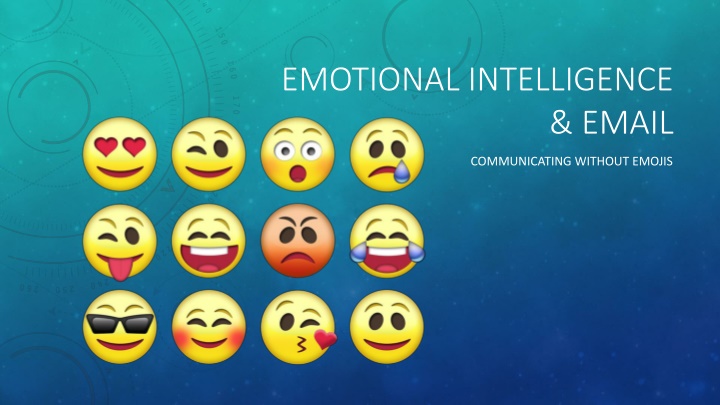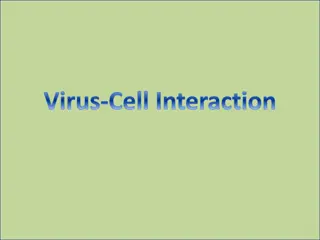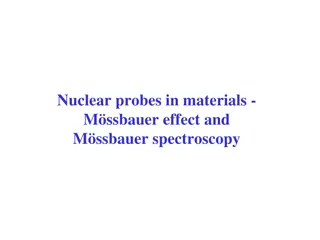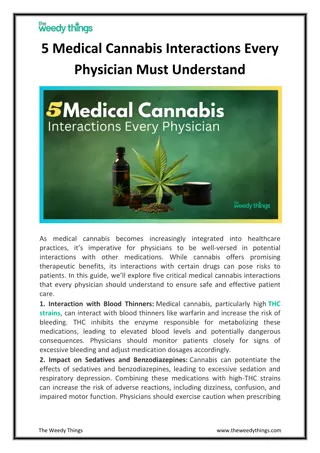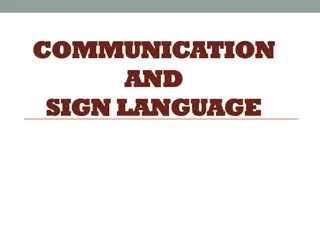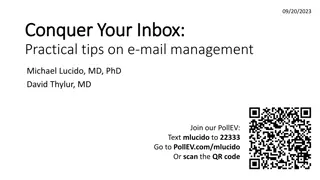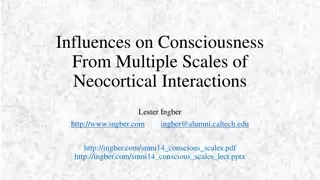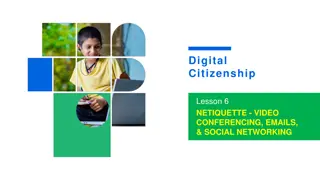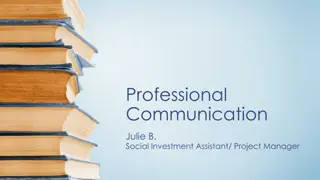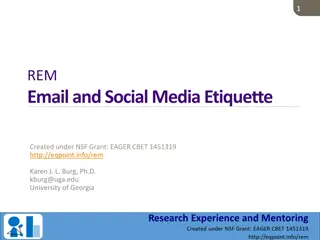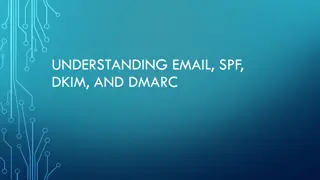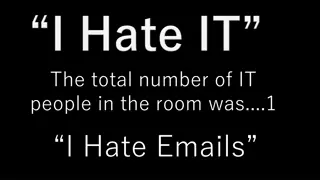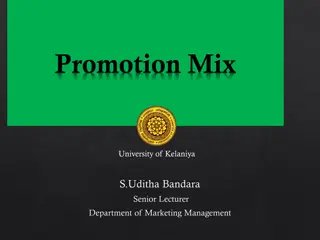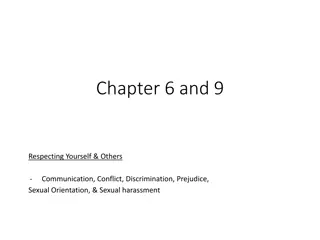Mastering Email Communication for Effective Interactions
Enhance your email communication skills by understanding the nuances of emotional intelligence, proper email etiquette, and effective email format. Learn how to craft compelling subject lines, avoid common email pitfalls, and tailor your tone based on recipients. Discover strategies for improved email composing, reading, and responding to ensure clear and concise communication.
Download Presentation

Please find below an Image/Link to download the presentation.
The content on the website is provided AS IS for your information and personal use only. It may not be sold, licensed, or shared on other websites without obtaining consent from the author.If you encounter any issues during the download, it is possible that the publisher has removed the file from their server.
You are allowed to download the files provided on this website for personal or commercial use, subject to the condition that they are used lawfully. All files are the property of their respective owners.
The content on the website is provided AS IS for your information and personal use only. It may not be sold, licensed, or shared on other websites without obtaining consent from the author.
E N D
Presentation Transcript
EMOTIONAL INTELLIGENCE & EMAIL COMMUNICATING WITHOUT EMOJIS
OPENING REFLECTION: What types of interactions do you generally choose to mediate through email? (As opposed to other forms of interaction such as instant messaging platforms) How much time do you typically spend composing and email? Reading/reacting to an email? How do you conceptualize a subject line: When receiving an email When writing an email
TOP TEN COMPLAINTS RE: EMAIL 1. Vague subject line Organization, searchable 2. No greeting and/or no sign off 3. Sloppiness Treating email like text messages Disorganized, stream-of-conscious-like 4. Incorrect usage of capital letters not capitalizing if i should USING ALL CAPS SUGGESTS YELLING 5. Bad grammar, spelling, punctuation
TOP TEN COMPLAINTS RE: EMAIL (CONTINUED) 6. Poor formatting All one paragraph, rambling, too many spaces 7. Vague message Similar to email as text message and unclear subject lines 8. Unfriendly tone 9. CC-ing everyone Related: Reply All 10. Being forced to hunt for a response Response at the bottom of a copy of earlier message Reference Shirley, T. (2010). Email etiquette: A fresh look at dealing effectively with email, developing great style, and writing clear, concise messages. London, England: Marshall Cavendish. Ebook
PERSONAL CHECK-IN SENDING AN EMAIL How much time to I wait after typing an email to click send ? Do I differentiate tone/style depending on the individual or group to whom I am sending the email? What are my own pet-peeves concerning email? RECEIVING AN EMAIL Have I met this individual in person? Does knowing/not knowing this individual outside the online workplace affect how I read/react to this email? How much time to I spend reading emails? Are there any emails I disregard without reading? If yes, what signals me to disregard these particular emails? How do I consider whether or not I should respond?
EFFECTIVE EMAIL FORMAT Opening address Name or group identifier Straight to the point Purpose for email I m reaching out because Benefit of the doubt Options Questions Invite response, start dialogue If you have any questions If I can be of any help Sincere sign-off
VOICING CONCERN Open lines of communication Benefit of the doubt Reference Shriar, J. (2015). 15 email templates to help managers. Retrieved from https://www.officevibe.com/blog/15-email-templates-for-managers
ACTIVITY (B) For this activity, we recommend larger groups (more than 6 individuals) break up into smaller groups. This allows for deeper conversation. During small group sessions, group facilitators can take notes (being careful to respect individuals concerns regarding confidentiality) in order to share summaries of each small group s discussion with the larger team. You can invite everyone to look over the summaries in order to further reflect on EI (in regards to email communications) and apply any take-aways to future email writing and email reading.
DISCLAIMER: The following emails are entirely fictional and not based on any past or present communications. Our goal is to have a discussion about what does and doesn t work in email communications, whether best practices for email communication exist and in what context, and what our own preferred communication styles are. Thanks for your participation!
Hello, William, DIRECTIVE EMAIL This is a reminder to keep track of your work and hours carefully and ensure you are presenting your best self to students. As you know, students are very important to us. For discussion: What was your initial reaction to this email? What is your image of the individual behind this email? What do you like about this email? What do you dislike about this email? Does this email invite a response? What would your next step be after receiving an email like this? Be sure to: Review your introduction and conclusion autotext in papers to ensure conversational tone. Read back through emails to students before you send them, making sure that you address their concerns. Track your time in TMI as Papers or Student Communication Prioritize papers using the priorities checklist Maggie Atwood, PhD Director of Writing Things Walden University
Hi, Glinda, NON-DIRECTIVE EMAIL Good morning! I was hoping to dive into our slide revisions for our upcoming presentation. I have different thoughts on where we might begin. First, there is some information on slides 4, 6, and 7 that is out of date. I was hoping that someone could update these details. Second, I was concerned about the amount and density of instructional content throughout the presentation. I know that we have a lot of ground to cover, and it all seems like essential information to address. We don t usually make it through the entire slide deck. Perhaps we could build in more discussion questions to break up the instructional content. Thirdly, I had this idea that we could incorporate some of the recent update on APA formatting to share with everyone. Is there a place where you think we could fit this information and resources in? We probably need to get started on these revisions soon since the presentation is next week. For discussion: What was your initial reaction to this email? What is your image of the individual behind this email? What do you like about this email? What do you dislike about this email? Does this email invite a response? What would your next step be after receiving an email like this? Oh, and, before I forget, we also need to address the post-presentation survey. I recall that some participants had trouble accessing it. The main issue is that it is missing the updated questions from quality metrics. I am interested hearing your thoughts. Thanks for all of your hard work! Sincerely, Jamie
Dear Tracy, CHATTY EMAIL How are you? Top of the morning to you. I remember you said you are an avid tea drinker, Earl Grey, right? How was your tea this morning? Do you do the cream and sugar, or perhaps you prefer honey and a sprig of mint? I hope you don t mind, but I must confess; coffee is my go to. My morning motto is coffee first! I just can t get over the chocolate and berry flavor profile in this new batch of Kenya I recently purchased. It is neat that we both have a mutual understanding for the importance of a good, solid hot caffeinated drink. That warm mug in hand somehow makes the day a little brighter and more worthwhile. You know? Well, at any rate, I hope you are having a happy and productive day. Now that I ve said a proper hello, I will get right to it. How is your data collection coming along for the time management project? Could you send me your charts, results, and conclusions by this Wednesday, February 22, 2018, by 4:00 p.m.? For discussion: What was your initial reaction to this email? What is your image of the individual behind this email? What do you like about this email? What do you dislike about this email? Does this email invite a response? What would your next step be after receiving an email like this? Dillon hopes to secure our numbers by Friday, so we can present our case to the board. Thus, if I receive your portion by Wednesday, I will be able to proof it and revise on my end on Thursday. What do you think, Tracy? You always do such a good job on these management projects. Is this Wednesday, February 22, 2018, by 4:00 p.m. a doable timeframe for you? I look forward to receiving your reply. Cheers to you! Alex
Best Practices Are there any specific rules for your institution regarding email? Does your leadership have any specific requests for email formatting?
